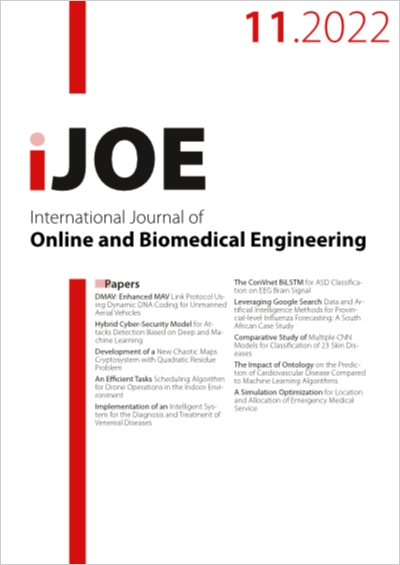Hybrid Cyber-Security Model for Attacks Detection Based on Deep and Machine Learning
DOI:
https://doi.org/10.3991/ijoe.v18i11.33563Keywords:
WSN, Cyber-attack, WSN, Cyber-attack, Deep Learning, PCA, SVD, SGD, CNBAbstract
Nowadays, numerous attacks can be considered high risks in terms of the security of Wireless Sensor Networks (WSN). As a result, different applications are introduced to manage the data and information exchange and related security sides to be save in transmission of data. Recently, most of the security attacks are classified as cyber ones. These attacks interest in the system halting and destroying the data rather than stealing the data. In this paper, a cyber-attacks detection system is proposed based on an intelligent hybrid model that uses deep and machine learning technologies. The proposed model improves the cyber-attack detection speed. In addition, a feature reduction model is proposed using machine learning methods (PCA and SVD) to select the most related features to the adopted classes of attacks. This can positively affect the deep-learning model complexity. The obtained results demonstrate the superiority of the proposed hybrid model-based cyber detection system in comparison to the traditional ones in reaching an accuracy of 99.98%, 100%, 100%, 100% for precision, recall, and F1-measure respectively, and reducing the time to 23s for the datasets of Message Queuing Telemetry Transport-Dataset (MQTT-DS) and Wireless Sensor Networks Dataset (WSN-DS).
Downloads
Published
How to Cite
Issue
Section
License
Copyright (c) 2022 Haider Th.Salim Alrikabi; Shaymaa Mahmood Naser , Yossra Hussain Ali, Dhiya Al-Jumeily OBE

This work is licensed under a Creative Commons Attribution 4.0 International License.



